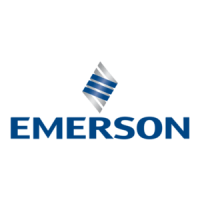
Do you have a question about the Emerson AE4-1287 R7 and is the answer not in the manual?
| Brand | Emerson |
|---|---|
| Model | AE4-1287 R7 |
| Category | Refrigerator |
| Color | Black |
| Energy Star Certified | No |
| Voltage | 115V |
| Refrigerant | R600a |
| Frequency | 60 Hz |
| Application | Home, Office, Dorm |
Explains the meaning of safety icons like DANGER, WARNING, CAUTION, NOTICE.
Details precautions for electrical hazards during servicing.
Outlines risks associated with pressurized systems containing refrigerant and oil.
Warns about potential burns from hot compressor components and brazing.
Provides guidance on safely handling compressors using appropriate lifting devices.
General statements regarding safe installation, commissioning, and maintenance.
Introduces HCFC-22 as a low-temperature refrigerant alternative and its challenges.
Advises on careful handling of POE lubricant and protective equipment.
Explains how the system uses electronics to monitor and control discharge temperature via refrigerant injection.
Describes protection temperature ranges and system design for minimizing injection impact.
Describes the NTC thermistor used to sense temperature and provide signals to the module.
Explains the CM's functions: input comparison, output control, and alarm signaling.
Details how the IV meters refrigerant flow into the compressor for cooling.
Details modifications to existing Discus compressors for Demand Cooling use.
States that Demand Cooling has virtually no effect on system heat of rejection for condenser sizing.
Emphasizes system cleanliness and the use of specific filter dryers.
Details requirements for the liquid refrigerant supply line and head fan usage.
Specifies the return gas temperature limit and defrost scheme considerations.
Discusses Demand Cooling approval with specific compressor unloading types like 4D, 6D.
Describes using Demand Cooling with 3D Discus digital compressors and sensor replacement.
Explains how return gas temperature affects injection and performance factors.
Refers to figures and tables for operating envelopes and setpoints.
Graph showing operating limits for specific refrigerants with Demand Cooling.
Graph showing operating limits for R-22 with Demand Cooling at 65°F return gas.
Illustrates the components and flow of the Demand Cooling system.
Wiring diagram for Demand Cooling with Sentronic oil pressure and current sensing relays.
Wiring diagram for Demand Cooling without Sentronic oil pressure control.
Wiring diagram for Demand Cooling with Sentronic oil pressure control but without current sensing.
Wiring diagram showing Demand Cooling with isolated control contacts.
Wiring diagram illustrating CoreSense Protection integration with Demand Cooling.
Lists setpoints and actions for the Demand Cooling module based on temperature.
Provides part numbers for Demand Cooling kits and related components.
Lists items included in kits and optional mounting brackets/sensors.
Table of factors to adjust evaporator capacity based on operating conditions.
Table of factors to adjust mass flow based on operating conditions.
Explains how the NTC thermistor and module monitor discharge temperature.
Details how to bench test the sensor and control module for proper function.
Table of calculated sensor resistance values for various temperatures.
Steps to bench test the Demand Cooling module and injection valve for proper operation.
Troubleshooting steps for diagnosing issues when the injection valve fails to inject.
Troubleshooting steps for diagnosing continuous injection by the valve.
Diagnostic steps for identifying issues related to suction pressure related to injection.
Troubleshooting steps for when the injection valve cycles on and off.
Table showing expected discharge temperatures for various operating conditions.
Graph showing Demand Cooling injection zones based on operating conditions.
